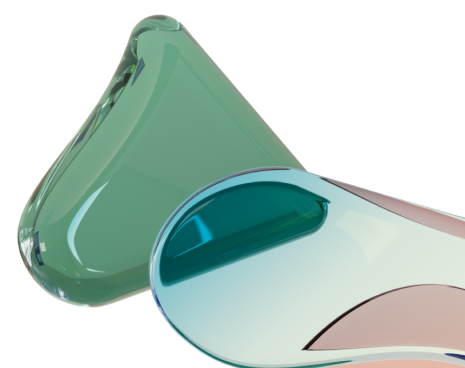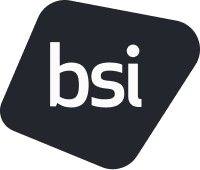Stay up to date with the latest news and innovations in the medical device industry.
The medical device industry is consistently evolving, staying ahead of latest updates and best practice has never been easier with the Compliance Navigator blog. We offer a comprehensive suite of medical device articles and topics to ensure your questions are answered. Join thousands of other MedTech professionals today. We've highlighted some recent blogs for you to take a look at.
US FDA recognition of Vaporized Hydrogen Peroxide sterilization as Established Category A method
Over the past years, the US FDA has announced a number of initiatives, including Ethylene Oxide (EO) Innovation Challenges and Master File Pilot programs, to advance innovation and streamline the regulatory pre-market approval process. On 8 January 2024, the US FDA announced the re-issue of the guidance titled “Submission and Review of Sterility Information in Premarket Notification (510(k)) Submissions for Devices Labeled as Sterile”, superseding its 2016 version. In this blog, we will explore what are the significant changes in the guidance; what prompted these changes; and what are the implications for medical device manufacturing.
FDA and ISO 13485 – Cause for Concern or Celebration?
On 2 February 2024, after years of speculation by the medical device community, the US Food and Drug Administration (FDA) published its final rule amending the Current Good Manufacturing Practice (CGMP) requirement of the Quality System Regulation (QSR) to incorporate by reference, and thereby align more closely with, the international consensus standard ISO 13485:2016, Medical devices—Quality management systems—Requirements for regulatory purposes.
The new regulation is called the ‘Quality Management System Regulation (QMSR) Final Rule’[1] and is the latest significant regulatory change affecting the global medical device industry. The intent of this rule is to support and promote consistency in the regulation of devices by harmonising the FDA’s regulatory framework with other regulatory authorities.
Embracing sustainability and the circular economy in the medical device industry: Understanding the differences
The medical device industry is immersed in innovation, consistently pushing the boundaries of what is possible in healthcare. Amidst these advancements, two essential concepts have emerged that are seen as both enablers and inhibitors to innovation: Sustainability and the circular economy. While often used interchangeably, they represent distinct approaches to addressing environmental, economic, and global supply chain challenges. In this blog, we will explore the key differences between sustainability and the circular economy in the medical device industry.
Regulation of Medical Devices and In Vitro Diagnostic Medical Devices in Northern Ireland
The regulation of medical devices and in vitro diagnostic (IVDs) medical devices in Northern Ireland is governed by the Windsor Framework. This means that the EU Medical Device Regulation ((MDR)(EU) 2017/745 and In Vitro Diagnostic Medical Device Regulation (IVDR) (EU) 2017/746 have applied in Northern Ireland in line with the respective dates of application across the EU. The Medicines and Healthcare Products Regulatory Authority (MHRA) is the de facto Competent Authority for Northern Ireland and has specific requirements for registration, vigilance reporting etc.
Update on the UKCA Mark: a rapidly evolving landscape
The Medicines and Medical Devices Act 2021 [1] gave legal power to the Medicines and Healthcare products Regulatory Agency (MHRA) to set up a new United Kingdom (UK) regulatory framework for medical devices and in vitro diagnostic devices (IVDs). This new primary legislation paved the way for the MHRA to update the existing secondary legislation - the UK Medical Devices Regulations 2002 [2]. According to the 2021 Act, new regulations must safeguard public health and, at the same time, have regard to the safety and availability of devices. The Act also means that new regulations must also make the UK a favourable place to research, develop, manufacture and supply medical devices. It is a requirement that the MHRA must carry out a public consultation before updating these and any future regulations.
Discussion-Ethical and trustworthy Artificial Intelligence
The application of the AIA is expected to have a global effect as it has a horizontal applicability across industries, it covers all providers and users where the output of the AI system is used in the EU, and standardization creates harmonization increasing business opportunities for large markets such as the EU.al Intelligence.
The Medical Device Single Audit Program (MDSAP) audit approach document updated
Changes introduced in the instructions for MDSAP audits The Medical Device Single Audit Program (MDSAP) was developed to conduct regulatory audits of quality management systems (QMS) of manufacturers of medical devices. The MDSAP allows a single audit conducted by a recognized Auditing Organization (AO) to cover the requirements of BS EN ISO 13485:2016, together with specific regulatory requirements for the participating jurisdictions – Australia, Canada, Japan, Brazil and USA. Participation in the programme should reduce the need for duplicate audits and reduce the resource requirements on Regulatory Authorities and medical device manufacturers.
New product development
The requirements of the Regulation will inevitably lead to changes in your procedures for design and development. The product in your research and development pipeline and their development plans need to be reviewed to assess the impact on your ability to launch these products, the effect on the development and launch timelines, and any additional needs for the development plan.
Risk management by BS EN ISO 14971
The risk management process described in BS EN ISO 14971 [1] consists of several steps, as illustrated in Figure 1, which apply to the design, development, production and post-production stages of every medical device. The distinct process steps are numbered from 1 to 6 and discussed in this blog.
Interpret standards and regulations with BSI Compliance Navigator
Interpreting and implementing medical device regulations and standards can be complex, time consuming and expensive. Understanding the impact of updates on your organization is key to ensuring future compliance.
BSI Compliance Navigator offers thousands of standards and regulations, with expert commentary, notification updates and tracked changes built in, ensuring easy interpretation and implementation. We offer a seamless integration of the platform into your organization through our team of experts.
To access thousands of medical device standards and regulations and the above features, click find out more below:





